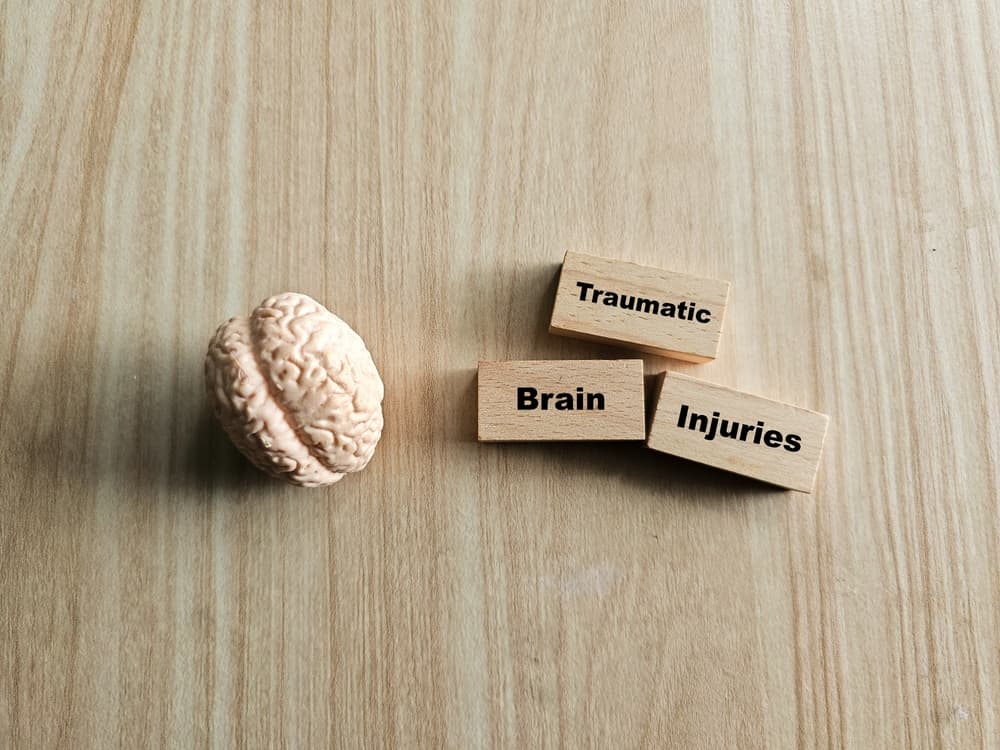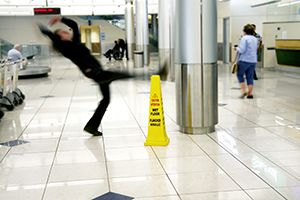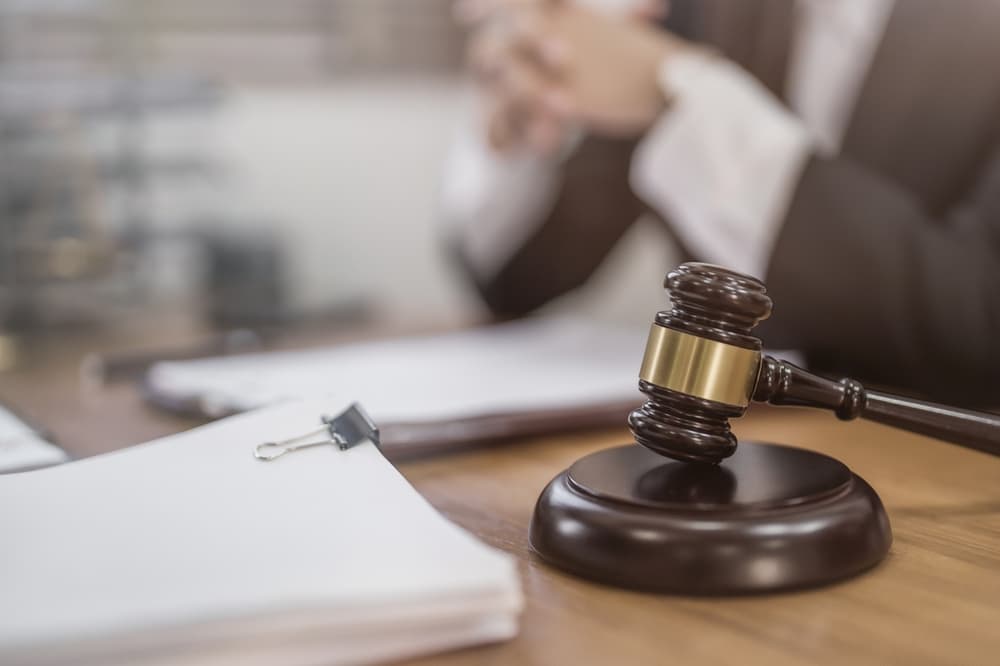
Catastrophic injuries change lives in an instant. These severe injuries often leave victims with lasting disabilities, overwhelming medical expenses, and the inability to work. When someone else's negligence causes this kind of harm, Ohio law allows you to seek financial recovery.
A Columbus catastrophic injury lawyer at O’Connor Acciani & Levy can help you seek compensation to cover medical treatments, lost income, rehabilitation, and other expenses related to your injury.
Our Columbus catastrophic injury attorneys fight for those who have suffered life-altering harm due to another person’s careless actions. We understand the challenges ahead and are ready to pursue the compensation you deserve.
Contact us today for a free consultation to learn how O’Connor Acciani & Levy can help you.
What Is a Catastrophic Injury?

A catastrophic injury leads to long-term or permanent impairment. These injuries often prevent victims from returning to work or living independently. Many result in extensive medical care, surgeries, and rehabilitation.
Some of the most common catastrophic injuries include:
- Traumatic brain injuries (TBIs): Head trauma from falls, car accidents, or sports injuries can cause cognitive impairment, memory loss, and physical disabilities.
- Spinal cord injuries: Damage to the spinal cord can lead to paralysis, affecting mobility and daily activities.
- Severe burns: Fires, chemical exposure, or electrical accidents can cause disfigurement, nerve damage, and life-threatening infections.
- Amputations: The loss of a limb affects mobility, independence, and quality of life.
- Multiple fractures or crush injuries: Accidents involving high-impact forces, such as vehicle collisions or construction accidents, can result in severe fractures that require extensive medical intervention.
If you or a loved one has suffered one of these injuries, working with a severe injury attorney can help you hold the responsible party accountable.
How Do Catastrophic Injuries Happen?
Catastrophic injuries often happen due to the negligence or reckless actions of others. These injuries frequently result in long-term disabilities, costly medical care, and significant changes to a victim’s quality of life. Some of the most common causes include:
Motor Vehicle Accidents
Car, truck, and motorcycle crashes are among the leading causes of catastrophic injuries. High-speed collisions, rollovers, and crashes involving large commercial vehicles can lead to traumatic brain injuries (TBIs), spinal cord injuries, amputations, and severe burns. Victims may require extensive medical treatment, rehabilitation, and lifelong care.
Pedestrian and Bicycle Accidents
Pedestrians and cyclists are vulnerable to serious injuries when struck by motor vehicles. Without the protection of a vehicle, these victims often suffer head trauma, broken bones, spinal injuries, and internal organ damage. Distracted or reckless drivers are frequently to blame in these accidents.
Slip and Fall Accidents

Falls are a major cause of traumatic brain injuries, fractures, and spinal cord damage, especially for older adults. Slippery floors, uneven surfaces, or poorly maintained walkways can create dangerous conditions. Property owners who fail to address hazards may be held liable for a victim’s injuries.
Unsafe Property Conditions (Premises Liability)
Negligent property maintenance can lead to devastating injuries. Poor lighting, broken handrails, faulty elevators, and security failures put visitors at risk. If a property owner fails to correct dangerous conditions, they may be responsible for any resulting injuries.
Dog Bites
Severe dog attacks can cause permanent scarring, nerve damage, and infections. In some cases, victims may suffer amputations or facial disfigurement that require reconstructive surgery. Ohio has strict liability laws that hold dog owners accountable for injuries caused by their pets.
Workplace Injuries and Construction Accidents
Worksites, especially construction zones, pose significant risks for catastrophic injuries. Falls from heights, heavy machinery accidents, and exposure to hazardous substances can lead to spinal cord damage, crush injuries, and amputations.
While workers' compensation may cover some medical expenses and lost wages, it does not always provide full financial relief. If a third party—such as a negligent contractor or equipment manufacturer—played a role in the accident, victims may be able to file a personal injury lawsuit for additional compensation.
Medical Malpractice
Medical errors can have life-altering consequences. Surgical mistakes, misdiagnoses, anesthesia errors, and birth injuries can cause permanent disabilities. Victims of medical negligence may pursue compensation for additional treatments, lost wages, and pain and suffering.
Nursing Home Abuse
Elderly residents in nursing homes may suffer catastrophic injuries due to neglect or abuse. Falls, malnutrition, medication errors, and physical assaults can lead to serious health complications or wrongful death. Holding negligent facilities accountable helps protect vulnerable individuals and prevent future harm.
Acts of Violence
Gunshot wounds, stabbings, and physical assaults often cause brain trauma, paralysis, and permanent disabilities. In some cases, property owners may be liable if inadequate security contributed to an attack. Victims of violent crimes may have legal options for seeking financial recovery.
Sports and Recreational Injuries
High-contact sports and extreme recreational activities increase the risk of traumatic brain injuries, spinal cord damage, and broken bones. Schools, leagues, and equipment manufacturers may be responsible if negligence played a role in a player’s injury.
Defective Products and Unsafe Consumer Goods
Poorly designed or malfunctioning products can cause burns, electrocutions, amputations, and head trauma. Faulty auto parts, dangerous medical devices, and hazardous household products may put consumers at risk.
You can hold manufacturers and distributors accountable for failing to ensure product safety.
A severe injury attorney can help determine the cause of your injury and fight for the compensation you need to move forward. If someone else’s negligence led to your catastrophic injury, legal action may provide financial relief for medical care, lost income, and other damages.
Proving Negligence in a Catastrophic Injury Claim

To recover compensation for a catastrophic injury, you need an attorney to prove that another party’s negligence caused your harm. This legal process involves demonstrating four key elements:
1. Duty of Care
The first step in proving negligence is showing that the at-fault party had a legal responsibility to act with reasonable care. This duty of care varies depending on the situation.
For example:
- Drivers must follow traffic laws and operate vehicles safely.
- Property owners must maintain safe premises for visitors.
- Employers must provide a safe work environment.
- Manufacturers must ensure their products are free from defects.
2. Breach of Duty
Once the duty of care is established, your lawyer must show that the responsible party failed to uphold that duty. A breach occurs when someone acts carelessly, recklessly, or fails to take reasonable precautions. Examples include:
- A driver running a red light and causing a collision.
- A store owner ignoring a spill that leads to a slip and fall.
- A doctor misdiagnosing a condition, leading to severe complications.
- A company selling a defective product that causes injury.
3. Causation
Proving a breach of duty is not enough—your attorney must also show that this negligence directly caused your catastrophic injury.
Defense attorneys and insurance companies may argue that pre-existing conditions or unrelated factors contributed to the injury. Medical records, accident reports, expert testimony, and video footage can establish this link.
4. Damages
Finally, your lawyer must demonstrate that your injury resulted in measurable losses.
Catastrophic injuries often lead to:
- Extensive medical bills for surgeries, hospital stays, and rehabilitation.
- Loss of income due to the inability to work.
- Long-term disability and reduced quality of life.
- Pain and suffering, emotional trauma, and loss of independence.
A catastrophic injury lawyer in Columbus can gather evidence, consult experts, and build a strong case to prove negligence.
Comparative Negligence in Ohio Injury Cases
Ohio follows a modified comparative negligence rule under Ohio Revised Code § 2315.33. This means you can seek compensation if you are 50% or less at fault for the accident. However, your settlement or court award will decrease by your percentage of responsibility.
If your responsibility exceeds 50%, you cannot recover damages.
Insurance companies often try to shift blame to reduce their payout. A Columbus catastrophic injury lawyer can push back against these tactics and fight for the full compensation you deserve.
Compensation for Catastrophic Injuries
Catastrophic injuries often leave victims with lifelong medical needs, loss of income, and significant changes to their daily lives. Because these injuries cause permanent harm, the financial impact often exceeds standard personal injury claims. A successful lawsuit can provide compensation to cover current and future expenses.
A catastrophic injury claim may include various forms of compensation, depending on the circumstances of the accident and the severity of the injuries.
Medical Expenses
Catastrophic injuries often require extensive medical treatment, including:
- Emergency care and hospitalization
- Surgeries and ongoing medical procedures
- Rehabilitation and physical therapy
- Prescription medications and pain management
- Assistive devices such as wheelchairs, prosthetics, or home modifications
A lawsuit can help ensure that all current and future medical expenses are accounted for in a settlement or court award.
Lost Income and Reduced Earning Capacity
Many victims of catastrophic injuries are unable to return to work or must take lower-paying jobs due to their physical limitations.
Compensation may cover:
- Lost wages for time away from work
- Loss of future earning potential
- Job retraining, if applicable
If an injury prevents someone from working altogether, their settlement should reflect the long-term financial impact of their disability.
Pain and Suffering
Catastrophic injuries affect more than just finances—they take a significant toll on a person’s daily life and emotional well-being.
Victims may receive compensation for:
- Chronic pain and discomfort
- Emotional distress, including anxiety or depression
- Loss of enjoyment of life
- Permanent disability or disfigurement
Because these damages are harder to quantify, a Columbus catastrophic injury lawyer can help calculate a fair amount based on similar cases and expert testimony.
Home and Lifestyle Adjustments
Severe injuries often require changes to a victim’s home and daily routine.
A lawsuit may compensate for:
- Home modifications such as wheelchair ramps, stairlifts, or widened doorways
- Transportation costs for accessible vehicles
- In-home nursing care or assistance with daily activities
Wrongful Death Damages
If a catastrophic injury results in death, the victim’s family may pursue a wrongful death claim.
This can provide compensation for:
- Funeral and burial expenses
- Loss of financial support from the deceased
- Loss of companionship and emotional support
Punitive Damages
In cases involving extreme negligence or intentional wrongdoing, courts may award punitive damages to punish the responsible party and deter similar behavior. These damages may arise in cases of reckless conduct, drunk driving accidents, or acts of violence.
A severe injury attorney can assess the full impact of your injuries and fight for maximum compensation. If someone else’s negligence caused your catastrophic injury, you should not have to bear the financial burden alone.
Columbus Catastrophic Injuries FAQs
How long do I have to file a catastrophic injury lawsuit in Ohio?
Ohio law sets a two-year statute of limitations for personal injury claims, including catastrophic injuries (Ohio Revised Code § 2305.10). This means you must file a lawsuit within two years from the date of the injury. If you miss this deadline, you may lose your right to seek compensation.
What if my injury was caused by a government entity?
Claims against government entities, such as a city or state agency, follow different rules. Under Ohio Revised Code § 2744.09, you must first provide written notice of your claim within six months of the injury. Lawsuits against government entities often have additional restrictions, so act quickly.
What if my catastrophic injury wasn’t immediately obvious?
Some injuries, like brain trauma or internal damage, may not show symptoms right away. Ohio law allows the "discovery rule" in certain cases, meaning the statute of limitations may begin when the injury is discovered—or should have been reasonably discovered—rather than the date of the accident.
A Columbus catastrophic injury lawyer can determine if this applies to your case.
How long does it take to resolve a catastrophic injury case?
The timeline varies depending on the complexity of the case, the severity of the injuries, and whether the case settles or goes to trial. Some claims settle in months, while others take a year or longer if litigation is necessary. An attorney can provide a better estimate based on the details of your claim.
What should I do if an insurance company offers me a settlement?
Insurance companies often offer low settlements that don’t fully cover long-term medical needs or lost wages. Before accepting any offer, speak with a lawyer who can assess whether the amount is fair and negotiate for maximum compensation.
Speak With Our Columbus Catastrophic Injury Lawyers Today
Recovering from a catastrophic injury requires time, resources, and legal support. You don’t have to take on this battle alone. Our Columbus catastrophic injury lawyers are ready to fight for the compensation you need to move forward.
Call (614) 545-5162 today for a free consultation and find out how we can help you.